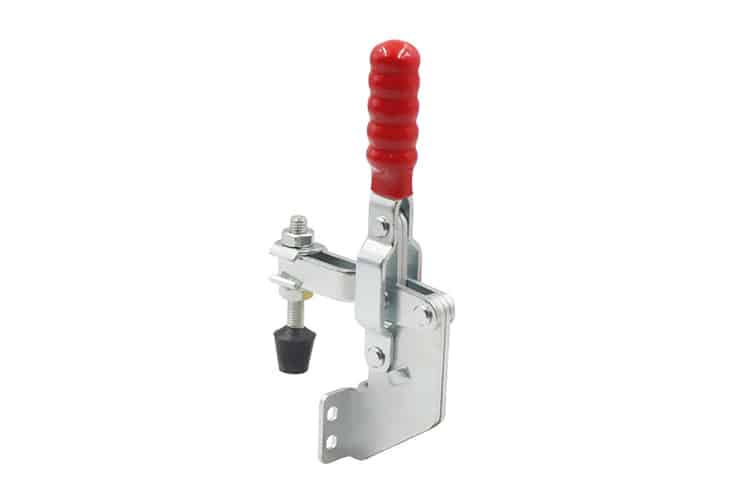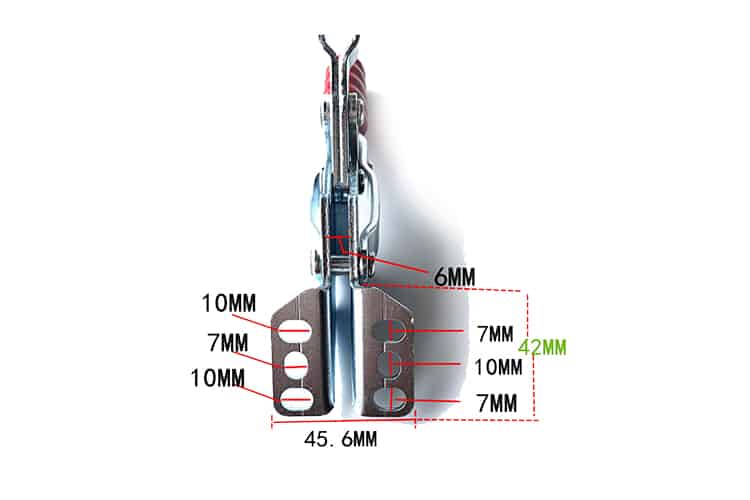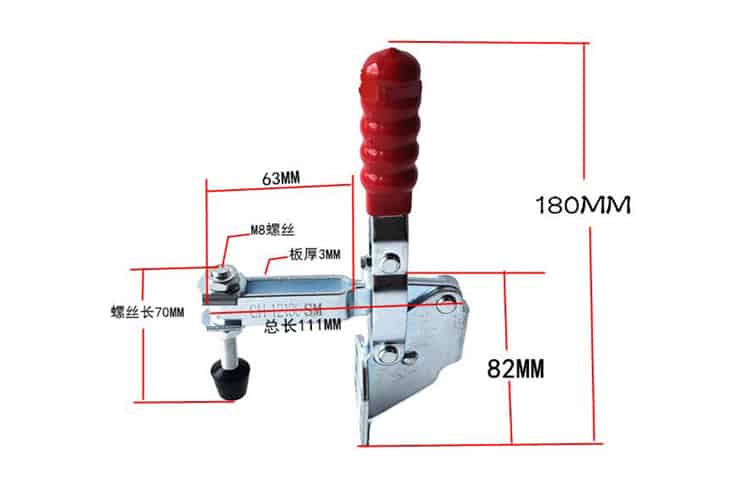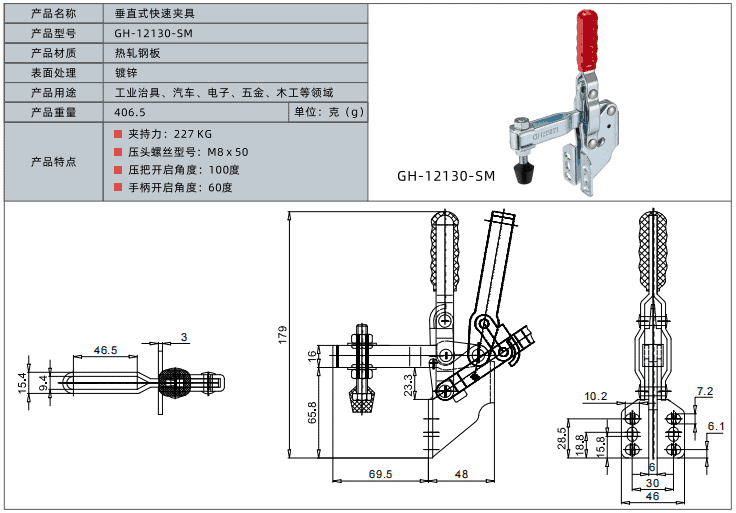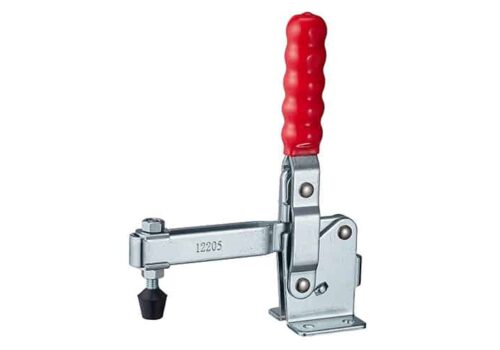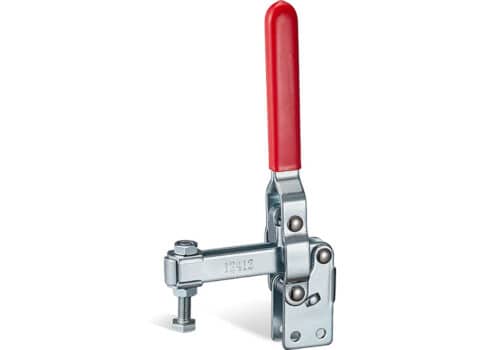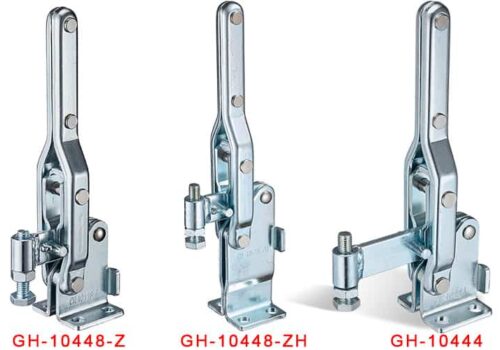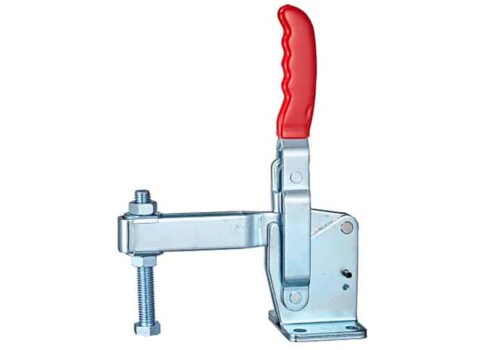vertical toggle clamps gh-12130-sm
| Type: | Push-pull Clamp |
| Model: | GH-12130-SM |
| Material: | Iron |
| Surface Finish: | Galvanized |
| Item Weight: | 406.5 g |
| Size: | |
| Package Dimensions: | |
| Product Origin: | China |
| Lead Time: | in-stocks |
| Holding Capacity: | 227 KG |
| Plunger Stroke: | |
| Spindle Supplied: |
Vertical toggle clamps are mechanical devices used to hold objects in place with a high level of force. They consist of a handle, a linkage system, and a clamping arm that can be adjusted to grip the object. The clamp is typically mounted vertically and can be used for various applications, such as welding, woodworking, and metalworking.
Features of vertical toggle clamps include a compact design, high clamping force, and easy operation. They are also known for their durability and ability to hold objects securely in place, even under high pressure. Some models may have additional features, such as adjustable clamping pressure and automatic locking mechanisms.
Vertical clamps are designed to hold objects in a vertical position, and they are commonly used in manufacturing, construction, and woodworking applications. They come in a variety of sizes and styles, including C-clamps, pipe clamps, and toggle clamps. Some of the features that may be found on vertical clamps include adjustable clamping pressure, swivel pads to prevent the marring of surfaces, and quick-release mechanisms for easy adjustment.
What is a vertical toggle clamp and how does it work?
A vertical toggle clamp is a type of clamping mechanism used to secure objects in place. It consists of a lever, a pivot, and a clamping pad. When the lever is in the up position, the clamping pad is open and can be positioned around the object to be clamped. When the lever is pulled down, the pivot locks in place and the clamping pad securely grips the object. The clamping force is generated by the mechanical advantage of the lever system. Vertical toggle clamps are commonly used in manufacturing, woodworking, and metalworking applications.
One of the advantages of vertical toggle clamps is that they can be operated with one hand, leaving the other hand free to position the object being clamped. They are also known for their high clamping force and their ability to hold objects securely in place. Some vertical toggle clamps also have adjustable clamping force, which allows for greater control over the clamping pressure.
What are the different types of vertical toggle clamps and how do I choose the right one for my application?
There are several different types of vertical toggle clamps available, including horizontal handles, vertical handles, latch types, and push/pull types. The type of clamp that is best suited for your application will depend on a variety of factors, including the size and shape of the object being clamped, the required clamping force, and the operating environment.
Horizontal handle vertical toggle clamps are ideal for applications where space is limited, as the handle can be positioned parallel to the clamping surface. Vertical handle toggle clamps are better suited for larger objects, as the handle can be positioned perpendicular to the clamping surface, providing greater leverage. Latch-type toggle clamps are designed for quick and easy clamping and releasing, while push/pull toggle clamps are ideal for applications where the clamping force needs to be applied in a straight line.
How do I properly maintain my vertical toggle clamps?
Proper maintenance is important to ensure that your vertical toggle clamps continue to function properly and provide reliable clamping force. To maintain your clamps, it is important to regularly clean them with a solvent to remove any debris or contaminants that may interfere with the clamping action. You should also lubricate the moving parts of the clamp with a light oil or grease to prevent rust and ensure smooth operation.
It is also important to periodically check the clamping pads for wear and replace them as needed. If the clamping pads are worn or damaged, they may not provide adequate clamping force or may damage the object being clamped. Additionally, it is important to store your clamps in a dry, clean environment to prevent rust and corrosion.
What are some common problems that can occur with vertical toggle clamps?
One common problem that can occur with vertical toggle clamps is the failure of the clamping mechanism to hold the object securely in place. This can be caused by a variety of factors, including worn or damaged clamping pads, inadequate clamping force, or improper alignment of the clamping pad.
Another common problem is the failure of the lever to release the clamping mechanism. This can be caused by a variety of factors, including damage to the pivot or lever, or the presence of debris or contaminants in the clamping mechanism.
To prevent these and other problems from occurring, it is important to regularly inspect your vertical toggle clamps and perform any necessary maintenance or repairs.
How do I install and use my vertical toggle clamps?
The installation and use of vertical toggle clamps will vary depending on the specific type of clamp and the application. In general, the clamp should be securely mounted to a stable surface using bolts or screws. The clamping pad should be positioned so that it can grip the object being clamped securely, and the lever should be in the up position.
To use the clamp, simply position the clamping pad around the object and pull the lever down to engage the clamping mechanism. Make sure that the clamping force is sufficient to hold the object securely in place, but not so strong that it damages the object. If necessary, adjust the clamping force using any available adjustment mechanisms.
When releasing the clamp, make sure that the lever is in the up position and that the clamping pad is clear of the object being clamped. Pull the lever up to release the clamping mechanism, and remove the object from the clamp.
It is important to follow the manufacturer’s instructions when installing and using vertical toggle clamps, as improper installation or use can result in damage to the clamp or injury to the user. Additionally, it is important to use appropriate personal protective equipment, such as gloves and eye protection, when using clamps in industrial or manufacturing settings.

